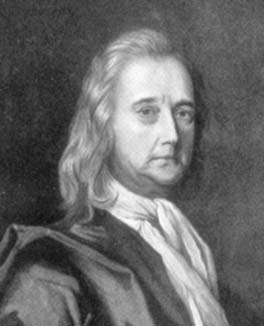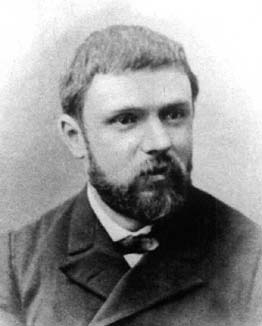Or: Why do we do all this math in physics class?
Recall last time: We saw how modern science evolved from natural philosophy first by adopting the inductive method (generalizing from experience), then Newton showed us how powerful combining math and physics could be. He formulated four mathematical rules which accurately describe the motion of ALL objects
(both earthly and "heavenly").



People thought he had basically solved the universe. Later, when all these mechanical things started being produced during the industrial revolution, people compared the universe (nature) to a vast complicated machine, which Newton had opened up and showed us how all the gears and levers worked to produce what we experience. This vision was called "The clockwork universe"
next
The most important thing to understand about the clockwork universe is it is
DETERMINISTIC.
The future is strictly determined by the past. So, if you know what is happening now,
you can figure out exactly what will be happening at any time in the future
by solving some (perhaps complicated) math problem.
Today I want to show you how math is used by scientists today.
In the process we will see some limitations on our ability to predict the future.
Note: We now know that Newton's Laws must be modified in extraordinary situations like very high
velocities (relativity), very large masses and very small particles (Q.M.).
In particular, we now believe there is an element of chance involved in how the smallest bits
of matter behave, making any prediction impossible.
This has nothing to do with today's talk.
Despite this, thousands of trained scientists are paid large saleries to try and construct
successful strategies for buying and selling stocks.
Weather and climate models
The first to realize this was Henri Poincare, about 120 years ago.
next
Mathematical modeling:
Some scientists go out in the "field" and collect data
(catching bugs, looking through telescopes),
A few Einsteins and Newtons sit in their offices and construct new theories of nature
(always mathematical),
MOST scientists (and even most professional mathematicians) do something called
Mathematical Modeling.

next
Basically, mathematical modeling
is the construction, testing, analysis, and fine-tuning
of mathematical models (usually computer programs) which are supposed to accurately represent
some physical, chemical, biological, or social process.

We construct mathematical models both to better UNDERSTAND
the process and hopefully also to
PREDICT where the process will lead.
next
Math Modeling is similar to the engineering design process,
but instead of constructing a car which will go up a ramp,
you want to construct a computer program which will in some way mirror the physics
(or biology, or whatever) of your situation.

Sometimes the models are supposed to represent reality exactly (like Newton's laws).
Others are only supposed to approximate reality to some degree (such as the law of friction).
In this case, the mathematics involved
hopefully corresponds to some truth of the situation.
In other words, we hope the scientist can
explain why this particular equation produces a good simulation of reality.
Here's an example:
next
next
The predator-prey equations:


Obviously these equations vastly simplify all the biological, chemical, climatological, etc.
factors which determine the populations of predator and prey (to say nothing of human influences).
It is therefore surprising that this model simulates the actual populations of the
Snowshoe Hare and Canadian Lynx quite accurately:

This is an example of a very succesful attempt at math modeling.
next
The Financial Markets
The interest in using math modeling to understand and predict the ups and downs
of the stock market is understandable.

However, there are several reasons to think that profitable predictions are strictly impossible:
These are examples of unsuccesful attempts at math modeling


next
Highway traffic models

If you're like me, after you spend hundreds of boring hours driving down the highway,
you'll begin to think about some of the traffic pattern you see and their causes:
There are a lot of scientists who get paid to try and answer these questions.
They construct models that represent driver behavior by a few simple mathematical rules
These models are sometimes sucessful at predicting the general qualities (e.g. clumpiness)
of a traffic situation, but can never predict exactly what will happen in a given situation.


next
Meteorologists try to predict the weather and climate using very sophisticated math models
which run on the world's most powerful computers.
(e.g. the Japanese Earth Simulator, the worlds most powerful computer at 36 Tflops).


Nevertheless, they can't seem to predict the weather much better than we could a century ago
(maybe one more day in advance).
Q:
Why even when human decisions are taken out, do our models still fail?
A:
In the weather models, the planet is divided into cells, say a mile square,
and each cell is supposed to have its own temperature, wind speed and direction, etc.
The problem is known as "the butterfly effect": In one of those cells a butterfly
MAY OR MAY NOT flap its wings, which may or may not cause a small wind, which may or may not
cause a bigger wind, which may change the whole weather system.

Sensitive Dependence on Initial Conditions
is the technical name for the butterfly effect.

The idea is that two situations which are vitually identical to begin with
but have some tiny difference will, very quickly, become completely different.
This happens even though the rules governing the system, like Newton's laws, are deterministic.
You may think that since the future is determined by the past, that similar pasts will
determine similar futures, but this is not true.
This is how the vision of the "clockwork universe" fails.
next


Look at this simulation, this mathematical model, of a planet and moon. Notice that even
though if I start them in the same position, and the rule is deterministic, the two simulations
quickly look completely different.
next
To further look into the role of math in the sciences, let's look at a different kind of math model:
John Conway's "the game of life".
"life" is different because it is not supposed to be a model for any specific process. Instead it is
supposed to be a model for any complex, yet deterministic system such as our universe.
It is a "toy universe", and it proves that even with a very simple set of rules you get all the
complexity, sensitive dependence, etc., that we see in nature.
Some people even think that the universe might really be a cellular automaton
next
Let's end with some beautiful,
complex pictures of the simplest possible model of any complexity:
we take a number...




and the Mandelbrot set explorer.
...and we see similar patterns in nature


